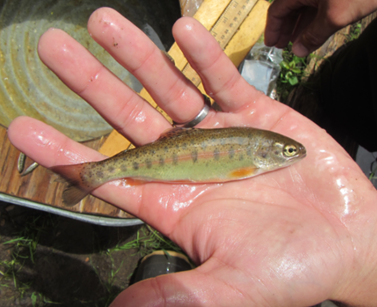Asotin –
The owner of an unpermitted, private dam that failed last year at the headwaters of Rattlesnake Creek in Asotin County has agreed to a multi-million-dollar restoration plan.
When the dam broke on the Bonasa Breaks Ranch it released approximately 9.4 million gallons of water. The rush of water caused significant damage to the environment and also public and private property.
Bonasa Breaks Ranch, LLC, also agreed to pay $15,000 for failing to secure the required permits to increase the dam’s size, and $100,000 for violating the state’s water quality laws.
Rattlesnake Creek is an important tributary to the Grand Ronde River and both provide habitat for fish protected by the Endangered Species Act. Summer steelhead use the creek for spawning, rearing and migration.
The Washington Department of Ecology worked with a technical team that consists of federal, state, local and private environmental experts to develop a plan to restore more than six miles of the creek. Restoration is estimated to cost $2.5 million over the next 10 years. If Bonasa Breaks fails to complete the work outlined in the plan, additional penalties will apply.
“The failure of this private dam severely damaged miles of habitat used by endangered summer steelhead,” said Water Quality Program Manager Heather Bartlett. “The dam break caused erosion, loss of thousands of mature trees that provided shade to cool water temperature, and sent boulders downstream and blocked migrating fish. Restoring Rattlesnake Creek is essential.”
Bonasa Breaks hired Rio Applied Science and Engineering to begin removing fish barriers, adding structures to provide refuge for juvenile fish, removing invasive plants, and planting native trees and shrubs.
Last fall, Bonasa Breaks also worked cooperatively with Ecology and other agencies to reduce the dam to its historic size and stabilize it to prevent another catastrophic release of water.
“It’s vital that dam owners work with us to ensure the safety of people and property located downstream,” said Joe Witczak, Dam Safety manager. “Our dam safety engineers and staff could have helped the owner make the necessary changes to avoid this failure.”
In Washington, a dam owner is legally responsible to design, construct, and operate their dam in a safe and proper manner.
“We appreciate that Bonasa Breaks has already begun work to manage invasive weeds and secure permission from downstream landowners to plan and implement restoration work,” Bartlett said.
Department of Ecology News Release - July 25, 2018
Updated: July 24, 2018


